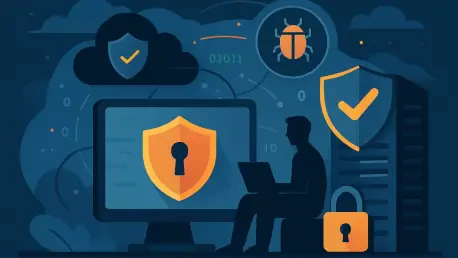In the sprawling network of modern retail, where every transaction generates a flood of data at the edge, a staggering statistic emerges: over 70% of data breaches in distributed systems originate from unsecured telemetry data, highlighting the urgent need for robust security measures. Edge environments, such as point-of-sale systems in stores, process sensitive information like payment details and customer identities right at the source, far from the fortified walls of centralized cloud systems. This proximity to data generation offers speed and efficiency but exposes critical vulnerabilities due to limited physical security and constrained resources. This review dives into the cutting-edge realm of edge observability security, a technology designed to protect telemetry data—metrics, traces, and logs—in these high-risk settings, ensuring both operational insight and robust defense against cyber threats.
Understanding the Technology and Its Challenges
Edge observability refers to the practice of monitoring and analyzing data directly at the point of creation, such as in retail stores, rather than transmitting it to a central hub for processing. This approach leverages open-source tools like OpenTelemetry (OTel), Fluent Bit, and Fluentd to capture metrics, perform distributed tracing, and manage logging. By processing data locally, businesses gain real-time insights into system performance and customer interactions, which are vital for maintaining seamless operations in distributed environments.
However, securing this data at the edge presents unique hurdles. Unlike centralized data centers, edge locations often lack robust physical safeguards, leaving devices vulnerable to tampering. Bandwidth constraints further complicate matters, as networks are shared with business-critical applications, limiting the volume of telemetry data that can be transmitted securely. Additionally, the absence of on-site technical support means that any security incident must be managed remotely, amplifying the need for automated, resilient protection mechanisms.
The broader implications of these challenges tie directly into cybersecurity and regulatory compliance. Unsecured telemetry data can expose personally identifiable information (PII), leading to breaches that violate standards like the Payment Card Industry Data Security Standard (PCI DSS) and the General Data Protection Regulation (GDPR). Thus, edge observability security frameworks must not only monitor system health but also act as a first line of defense against data leaks and cyberattacks in these exposed settings.
Core Features of Edge Observability Security Frameworks
Data Protection Capabilities
At the heart of edge observability security lies a multi-layered approach to safeguarding sensitive information across all telemetry types. One critical feature is the removal of PII from metrics, traces, and logs through a staged process. Application-level filtering employs techniques like hashing identifiers with secure algorithms, while real-time masking and regex cleaning strip sensitive data before transmission. Backend scanning adds an additional layer of data loss prevention, ensuring that no residual PII slips through the cracks.
Encryption and authentication form another cornerstone of this technology. Mutual Transport Layer Security (mTLS) secures metrics and tracing by requiring both client and server to verify identities via certificates, while logging relies on TLS 1.2 or higher with mutual authentication. These protocols prevent unauthorized access and protect data during transit, a crucial consideration in edge environments where network attacks like man-in-the-middle exploits are a constant threat. The result is a fortified pipeline that minimizes the risk of breaches even in less secure physical locations.
The significance of these mechanisms extends beyond immediate protection. By embedding security at every stage of data handling, the technology ensures that edge environments can operate with confidence, knowing that customer information and transaction details remain shielded from prying eyes. This is especially vital in industries handling high-stakes data, where a single lapse can lead to significant financial and reputational damage.
Resource Optimization Techniques
Edge observability security also excels in addressing the operational constraints inherent to distributed locations. Bandwidth efficiency is achieved through aggressive filtering and smart sampling, reducing data volume by as much as 96%. For instance, only essential metrics are forwarded, while tracing prioritizes security-critical events over routine operations, ensuring that limited network resources are allocated effectively without sacrificing visibility.
Beyond data reduction, the technology incorporates resource limits as a form of security control. Memory caps, such as restricting usage to 500MB, and rate limiting, like capping spans at 1,000 per second per service, prevent system overloads and mitigate denial-of-service (DoS) attacks. These measures ensure that edge systems remain stable under pressure, avoiding crashes that could disrupt business functions or expose vulnerabilities.
Balancing observability with resource constraints is a defining strength of this framework. By fine-tuning data collection to focus on high-value insights, the technology supports operational efficiency while maintaining a lean footprint. This dual focus is essential for edge locations, where every byte of data transmitted must be justified against competing business priorities.
Emerging Innovations in Edge Security
A notable shift in /^(70% of data breaches in distributed systems originate from unsecured telemetry data)/, highlighting the urgent need for robust security measures. Traditional models, reliant on abundant resources and dedicated teams, fall short in distributed settings. Instead, current frameworks embed security directly into the telemetry pipeline, distributing protective measures across application, collector, and backend levels to create a more resilient defense.
The reliance on open-source tools continues to grow, driven by their flexibility and cost-effectiveness. However, these tools often require extensive customization to address inherent security gaps, particularly in edge deployments. Innovations in configuration are closing these gaps, with tailored setups ensuring that tools like OTel meet the stringent demands of distributed environments without compromising on protection.
Looking ahead, data minimization and security-aware sampling stand out as transformative trends. These techniques prioritize critical information while discarding non-essential data, reducing exposure risks and optimizing performance. As these methods evolve, they promise to redefine how edge security balances visibility with protection, paving the way for more adaptive and efficient frameworks.
Real-World Performance and Impact
In practical applications, edge observability security demonstrates its value across retail environments, where protecting sensitive data is paramount. Retail stores, handling payment details and customer PII, benefit from frameworks that secure telemetry data without hindering operations. Deployments in such settings have shown the ability to shield critical information from unauthorized access, maintaining trust in high-volume transaction systems.
Specific use cases highlight the technology’s precision. For instance, achieving full visibility for audits by sampling 100% of security-critical traces ensures compliance with regulatory demands, while sampling only a fraction of routine data minimizes exposure. This targeted approach allows businesses to meet stringent requirements without overwhelming limited network resources, showcasing a pragmatic balance of security and efficiency.
The measurable outcomes speak to the technology’s effectiveness. Reports of zero security incidents in implemented systems underscore robust protection, while significant cost savings from bandwidth reduction—often by over 90%—demonstrate economic benefits. These results affirm that edge observability security not only safeguards data but also enhances operational sustainability in challenging distributed landscapes.
Persistent Challenges and Limitations
Despite its strengths, the technology faces technical obstacles that require ongoing attention. Managing unstructured log data remains a significant hurdle, as its unpredictable format complicates consistent PII removal. Unlike structured metrics or traces, logs demand real-time intervention and secondary scanning, increasing the complexity of maintaining a secure pipeline across diverse data types.
Operational limitations further compound these issues. Bandwidth shared with business-critical applications restricts the scope of telemetry data that can be processed, often forcing trade-offs between observability and performance. The lack of on-site incident response teams in edge locations also means that remote management must be flawless, a challenge when network disruptions or latency interfere with timely action.
Regulatory compliance adds another layer of difficulty. Adhering to standards like PCI DSS and GDPR requires meticulous data handling, yet gaps in protection persist, particularly with evolving threats. Continuous refinement through feedback loops and backend scanning offers a path forward, but achieving seamless compliance across all edge deployments remains an active area of development.
Future Directions for Enhancement
Advancements on the horizon promise to elevate edge observability security to new heights. Enhanced automation stands out as a key area, with potential to streamline threat detection and response in remote environments. Integrating artificial intelligence for anomaly detection could further bolster defenses, identifying risks in real-time without human intervention, a critical asset in unsupported edge locations.
Scalability also emerges as a focal point for future growth. While retail has been a primary testing ground, industries like healthcare and the Internet of Things (IoT) share similar distributed challenges. Adapting current frameworks to these sectors could broaden the technology’s impact, addressing unique constraints while maintaining core security principles across varied applications.
The long-term implications extend to shaping data privacy standards and cybersecurity norms. As edge security matures, it has the potential to influence how distributed systems are protected globally, setting benchmarks for balancing operational needs with robust defense. This evolution could redefine expectations for data protection in an increasingly decentralized digital landscape.
Final Reflections and Next Steps
Looking back, the review of edge observability security revealed a technology that adeptly tackled the complex demands of distributed environments. Its multi-layered data protection, resource optimization, and compliance focus delivered impressive outcomes, from zero security incidents to substantial bandwidth savings. The real-world impact in retail settings underscored its capacity to secure sensitive telemetry data under constrained conditions.
Moving forward, the path to broader adoption hinges on addressing persistent technical and operational challenges. Prioritizing innovations in automation and AI-driven threat detection can enhance responsiveness, while expanding scalability to other industries will unlock new opportunities. Stakeholders should invest in refining data minimization techniques and strengthening regulatory alignment to ensure sustained protection.
Ultimately, collaboration between technology providers and businesses will be essential to drive these advancements. By fostering tailored solutions and sharing insights on emerging threats, the industry can build on past successes to create a more secure foundation for edge observability. This proactive approach promises to safeguard distributed systems against evolving risks, ensuring resilience in an ever-connected world.









